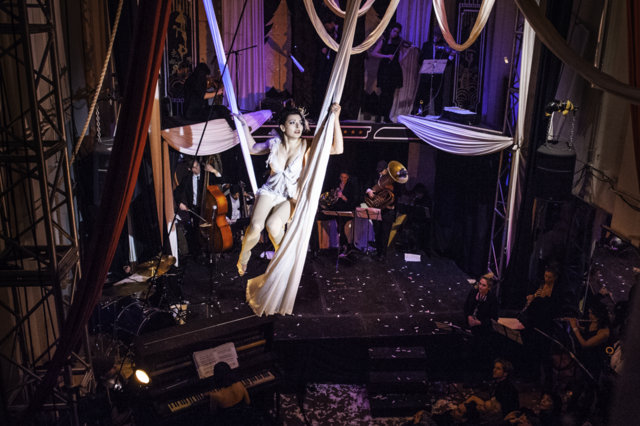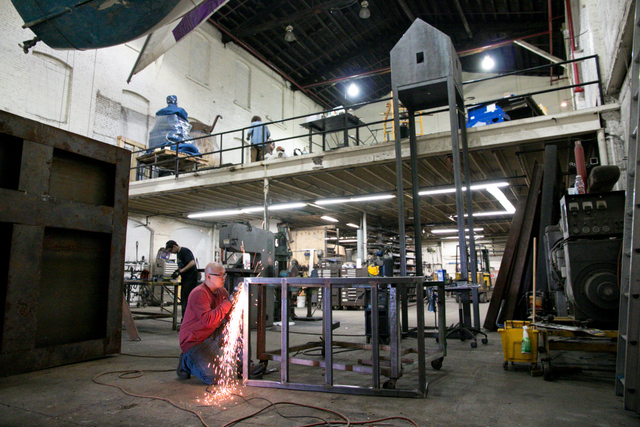 House of Yes. Photo by Michael Blase.
House of Yes. Photo by Michael Blase.
Oriana Leckert is the founder of the website Brooklyn Spaces and has also been an Untapped Cities contributor, writing one of our favorite pieces on 7 of the most unique bathrooms in the city. The tenacity of her expedition around the city to find these bizarre toilets has only been amplified for her book Brooklyn Spaces, a compendium of 50 Brooklyn hubs of culture and creativity. These are community-grown, artist-founded spaces within the post-manufacturing/post-industrial landscape, in buildings and lots that have been hacked, adapted and reused. You can tell Leckert knows Brooklyn (at least this part of Brooklyn, she admits) inside and out, and each location is told with a knowledgable ease that comes with already being a part of the place and a sense of humor.
In many ways, Brooklyn Spaces is a love letter to a type of creative culture that has been thriving in Brooklyn, but is not necessarily distinct to it. Jeff Stark of Nonsense NYC who has been behind some of the best underground events we’ve attended, wrote the forward with the bold statement: “Our city is just like your city.” In one swoop, he elevated this book beyond a hyperlocal guide–it’s a testament to those always pushing the boundaries, in Brooklyn, or elsewhere. This book is not about lamenting a lost New York City, it’s about celebrating and recognizing that the city is very much still alive–if you know where to look for it. And it’s about how these types of hubs survive.
But it’s also a warning–some locations mentioned in the book–the Gowanus Batcave, Death by Audio–have closed or underwent evolutions since the manuscript was submitted. It also speaks to the tremendous evolution that Williamsburg and its environs have gone through–in 1998, Leckert’s introduction to Brooklyn began on a deserted Bedford Avenue. As Leckert writes,”the aim of this book is not to document a century’s worth of creative culture, but to trace a specific artist renaissance that has manifested over the last twenty years.”
As Leckert addresses, as important as the artists themselves are the urban planning moves that have enabled the reclamation of industrial Brooklyn, which she traces to the work of Two Trees, and David and Jed Walentas in Dumbo.
There is a wide range of locations offered in the book–from Superhero Supply Store that serves as a front to a writing lab for students, a trapeze school in a former ice warehouse, a boat club on the Gowanus to a lab for amateur biologists. Each stylized page shows the space, neighborhood, original purpose of the building and current use. One thing you’ll notice about the book is how alive these spaces look in photographs, from the cover image to the interior shots.
We asked Oriana to highlight 5 of the most quintessential Brooklyn Spaces for us. Without further ado, here are the spots with small excerpts from the book:
5. Gowanus Ballroom
 The Gowanus Ballroom/Serett Metalworks. Photo by Alix Piorun
The Gowanus Ballroom/Serett Metalworks. Photo by Alix Piorun
“It’s a fucking beautiful shithole, this insane old place,” says Josh Young, Gowanus Ballroom proprietor. The cavernous 16,000-square-foot building–formerly a steel mill, before that a chemical plant, and before that a cannonball factory–is now home to Serett Metalworks, a crafting, fabrication and design firm. Every few months the space transforms into a venue for massive art and performance spectacles.
Text excerpted from Brooklyn Spaces.





